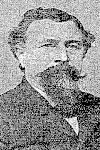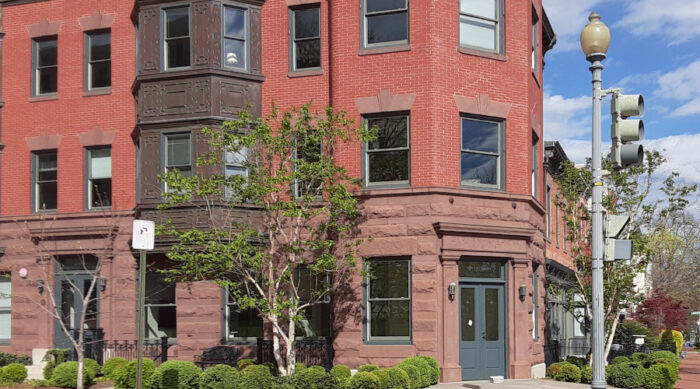
Peter Vierbuchen
I have often wondered about the history of the building with the inscription “German-American Bldg. Assn.” over the door. It is located at the northeast corner of 3rd Street SE and Independence Avenue. This weekend, I finally got around to doing the research.
Building associations were 19th century cooperative structures to help people build houses. A 1906 article in the Washington Times does a good job of explaining:
This association advances money on realty and on houses in the course of construction. Banks only loan money on finished buildings. In other words, a man has to have money before he can get it from a bank. In an association such as the German American Building Association he can acquire valuable property by putting aside a portion of his income each month.
Would-be homebuilders would buy into the association, then be able to borrow money according to the size of their stake that they had bought. Such groups were popular at this time: The city directory that year lists 17 in the District of Columbia. While the article states that the German American Building Association was founded in 1874, the current incarnation was organized in 1890. However, there was another one, named New German-American Building Association, No. 3, organized on the same corner in 1880.
One thing these incarnations all had in common was the list of solid local citizens who made up the board of directors. William Whitthaft, whose premises the 1880 association had been organized in. Edward Kubel, who had been the president of the New German Building Association in 1883. And Peter Vierbuchen, who was secretary of the association for 32 years, and who can be seen above.

In 1909, the organization decided it needed a new building, and hired Joseph Bohn, jr to design it and August Getz & Son to build it. Work was completed in March, 1909, with the bank taking up part of the ground floor, while the rest was used for retail. Above, there were two apartments, each with five rooms.
It was six years after the building opened that there was some excitement there: The hot water boiler in the basement exploded, injuring the janitor “seriously but not dangerously” and flooding the basement.
During the first world war, the organization dropped the word “German” from their name and continued on as the American Building Association. Under this name, they survived the almost complete disappearance of building associations in the late 1920s. They not only survived this environment, but thrived, moving to a newer, even grander space across the street. They had received the permit to build 11 days before the stock market crash of 1929, but survived all the same.
In the 1950s, they once again changed their name, this time going with the time and becoming a savings and loan. Their name became the American Savings and Loan Association. 15 years later, they became the American Federal Savings and Loan, then, after a merger with the Perpetual Federal Savings and Loan Association in 1980, became the Perpetual-American Federal Savings and Loan Association. This company was taken over by the Perpetual Savings Bank in 1982, who later changed their name to SunTrust and then to Truist, under which name it continues to operate at 3rd and Pennsylvania.
